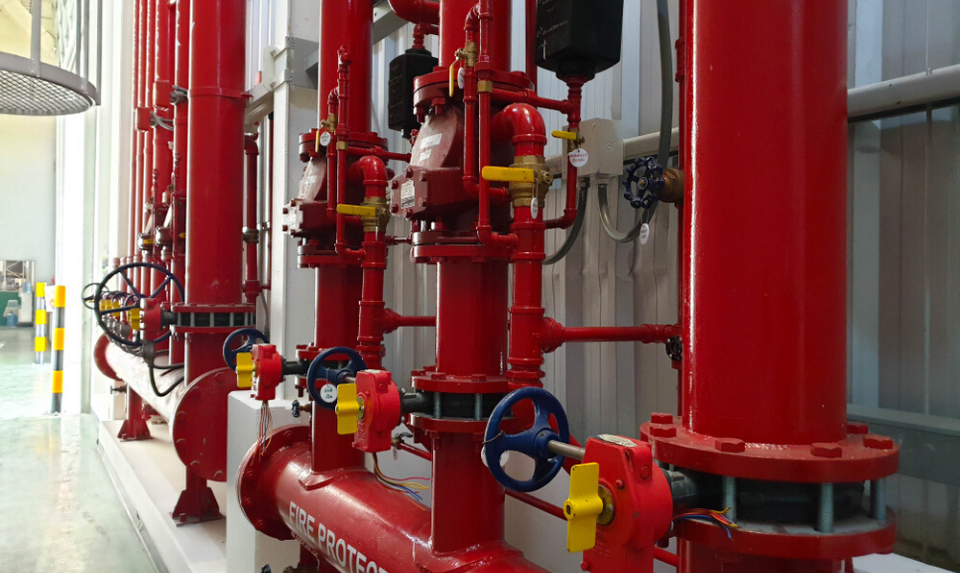You’ve possibly seen some movies where a small quantity of smoke triggers all of the sprinklers in a building, soaking everyone and everything within. But did you know that sprinklers aren’t even activated by smoke, and they don’t go off all at once? Fire sprinkler systems are really heat activated, one sprinkler head at a time, and most fires typically need only one or two sprinklers to be put out.
These are just two of the many misunderstanding about fire sprinkler sytems. In this article, we’ll bust other myths and find out the ins and outs of this vital safety technology.
You may think installing fire sprinkler systems is like choosing water damage to fire damage. This belief is a spinoff from the myths we just stated that sprinklers are set off by smoke and every sprinkler head triggers at the same time.
If that were the case, sprinkler systems might potentially cause more harm than good. After all, if you burned a piece of toast, every sprinkler would trigger, soaking all of your possessions, although there never was any actual danger of fire.
Luckily, the knowledgeable engineers who developed these fire sprinkler systems intended them to decrease the damage to your belongings from water, smoke and fire.
Fire sprinkler systems have been around for more than two centuries and have seen important improvements over the years. It’s correct that early versions weren’t very dependable and caused considerable water damage.
Nowadays, sprinkler systems are accredited with reducing deaths and loss of possessions by more than 65 percent. Given that each sprinkler head is mechanically triggered by fire-specific temperature, just one or two sprinklers can quickly extinguish and/or contain a fire to the room where it took place and cause little property damage.
And since sprinklers use about six times less water than a fire hose, they’re essentially less harmful to your belongings than a call from the fire department.
Fire Sprinklers as Fire Prevention
You’ve heard about the significance of an accurately maintained smoke detector. You’ve most likely also heard the annoying beeping noise it makes when it requirements some thought.
Have you as well heard that a smoke detector is all you require for fire protection? If so, you’ve heard one more of the most frequent myths about fire sprinkler systems: We don’t require them if we have a smoke detector. Some even consider that smoke detectors can put out fires. They cannot.
Smoke detectors are considered to alert us to a possible fire, and in cases where they’re hooked up to an alarm system, alert the fire department. They’re a vital part of a fire prevention system, as are fire sprinklers.

The existence of one does not remove the need for the other. They work simultaneously to save life and possessions from fire.
When a fire commence, the resulting smoke will finally set off a smoke detector alerting people to danger. This procedure can be quite slow depending on where the smoke detector is situated. For the meantime, the fire is increasing.
Alerting inhabitants to the presence of fire is significant. But, so is putting the fire out. When a fire commence, it quickly heats the air straight above it. This air rises and is pushed out to either side when it hits the ceiling. As this hot air achieves a sprinkler head, that sprinkler head is activated.
Not just any heat source will trigger a sprinkler system to set off. The sprinkler heads must distinguish a high enough temperature — typically between 135 and 165 degrees Fahrenheit (57 to 74 Celsius).
Most sprinkler heads are equipped with a glass trigger packed with a glycerin-based liquid that enlarge at the right temperature, breaking the glass and turns on the sprinkler head. The sprinkler head is connected to a system of pipes that are concealed behind the walls or ceiling.
These pipes wind throughout the building and outside to attach with a dependable water source. When the sprinkler head is activated, a valve to the pipe system is triggered, discharging the water that is kept under pressure from the pipes.
The water is swiftly pushed out of the pipes through the sprinkler head, spraying water down and out to the sides. This cautiously designed spray of water extinguishes the fire below and prevents it from distribution.

Fire sprinkler systems have transformed fire safety by mechanically putting out fires in the room of origin and avoid fires from spreading or re-igniting. The quantity of time this procedure requires the kind of fire sprinkler system.
Types of Sprinkler Systems
Since fire sprinkler systems protect a diversity of buildings and property, a lot of different types have been developed over the years. These consist of wet, dry, deluge, pre-action and foam. Each has its own exclusive set of characteristics that care for the specific building and possessions for which it was set up.
Sprinkler heads are associated to a system of pipes in the walls or ceiling of a room. These pipes consist of steel, copper or fire-resistant plastic. The most frequently used system in commercial buildings is a wet pipe system, which is composed of steel pipes that are constantly filled with water (hence, the term “wet”).
The water in the pipes is under a reasonable quantity of pressure. When the sprinkler head is set off, the pressurized water in the pipes is instantly released, providing a faster response time than any other kind of system.
As you might have guessed, in a dry pipe system, the pipes are not packed with water — they’re in fact filled with compressed air. When the sprinkler head is set off, a valve discharged the compressed air throughout the sprinkler head.
Once all of the air is released, the pressure in the pipe changes, permitting water to fill the system. Dry pipe systems have a slower response time (up to a minute delay). To make up for this, dry pipe systems release a larger amount of tremendously pressurized water, which needs larger pipes (and a larger budget).
And, while a leaky pipe in a dry pipe system doesn’t create a flooding threat, upholding the system is more complex and expensive.